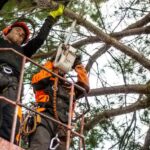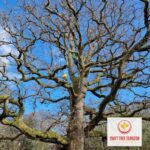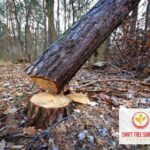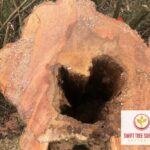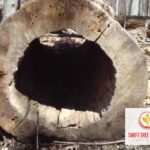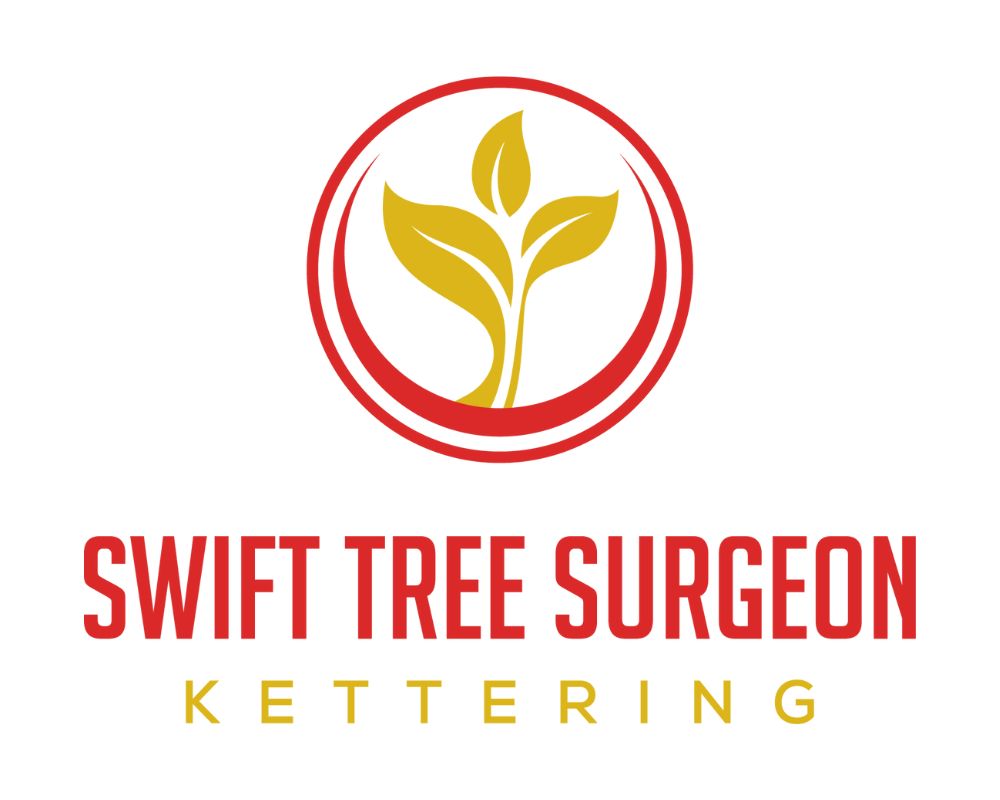Your trees may be feeling a bit claustrophobic. It’s time to let some sunlight in and give them room to breathe.
With crown thinning, you can create an open and inviting space for your trees, allowing increased sunlight penetration and improved air circulation. This will enhance their health and vitality, while also reducing the risk of disease and pests.
Plus, a more aesthetically pleasing crown shape will make your trees the envy of the neighbourhood.
Discover the transformative benefits of crown thinning for your trees in the UK today!
Increased Sunlight Penetration
Increased sunlight penetration can greatly enhance the overall health and growth of your trees. When trees are densely packed together, their canopy becomes thick, limiting the amount of sunlight that reaches their lower branches and the ground below.
By thinning the canopy, more sunlight can filter through to the lower parts of the tree, stimulating increased growth and vitality. This additional light promotes photosynthesis, a process crucial for trees to produce energy and nutrients.
Increased growth benefits your trees aesthetically and contributes to ecological balance by providing more shade, shelter, and food sources for other organisms within the ecosystem. Thinning the canopy allows for better air circulation, reducing the risk of fungal diseases and pest infestations.
Ensuring adequate sunlight penetration is vital for maintaining healthy and thriving trees on your property.
Improved Air Circulation
Better air circulation is one of the advantages of thinning out the canopy. When you prune your trees using proper techniques, you improve their overall health and vitality.
Here are three reasons why improved air circulation is essential for tree maintenance:
- Reduces disease: Thin canopies allow for better airflow, which helps prevent the growth and spread of fungal diseases. Proper air circulation prevents moisture build-up, reducing the risk of rot and other harmful conditions.
- Enhances photosynthesis: Thinning out the canopy allows more sunlight to penetrate through the branches, reaching lower parts of the tree. This increased exposure to sunlight improves photosynthesis, promoting healthier leaf growth and energy production.
- Strengthens branches: By removing excess foliage, you reduce weight on branches and minimise stress during strong winds or heavy rainfall. Pruning also encourages stronger branch development, making your trees more resistant to damage.
Regularly thinning out your tree’s canopy through proper pruning techniques is a crucial aspect of tree maintenance that ensures better air circulation and promotes overall tree health.
Enhanced Tree Health and Vitality
Thinning out the canopy of trees improves their overall health and vitality. Removing excess branches and foliage allows more sunlight to reach the lower parts of the tree, promoting better tree growth. This increased exposure to light stimulates photosynthesis, enabling the tree to produce more energy and nutrients necessary for its development.
Additionally, thinning out the canopy enhances air circulation within the tree’s crown, reducing humidity levels and preventing diseases caused by fungal infections.
Enhanced tree health and vitality have a significant impact on the ecosystem. Healthy trees provide shade, habitat for wildlife, and contribute to cleaner air by absorbing carbon dioxide and releasing oxygen through photosynthesis. Thinning out the canopy not only benefits individual trees but also helps maintain a balanced ecosystem by allowing other plants beneath them to receive adequate light for their own growth.
Reduced Risk of Disease and Pests
Reducing the density of your tree’s branches and foliage helps to create an environment that is less conducive to disease and pest infestations. Thinning out the canopy can prevent tree decay and minimise fungal infections. Here are three key benefits of reducing the density of your tree’s canopy:
- Improved Air Circulation: Thinning the branches allows for better air movement throughout the tree, helping to dry out moisture-prone areas. This reduces the likelihood of fungal spores finding a favourable environment to grow.
- Increased Sunlight Penetration: Removing excess branches opens up space for sunlight to reach lower parts of the tree. Sunlight is essential for photosynthesis and promotes healthy growth, while also creating conditions that are less favourable for pests and diseases.
- Enhanced Tree Vigour: A well-thinned canopy enables trees to allocate resources more efficiently, resulting in improved overall health and vitality. When trees have sufficient energy reserves, they are better equipped to fend off potential threats such as pest attacks or fungal infections.
Aesthetically Pleasing Canopy Shape
Creating a well-thinned canopy shape enhances the visual appeal of your trees and contributes to a more pleasing landscape. Canopy pruning, an essential aspect of tree maintenance, involves selectively removing branches to achieve a balanced and aesthetically pleasing shape.
Thinning the canopy improves the overall structure and form of the tree while allowing sunlight to penetrate through, promoting healthy growth throughout the entire tree. This helps prevent excessive shading and allows for better air circulation, reducing the risk of fungal diseases.
Additionally, a well-managed canopy shape can enhance the natural beauty of your landscape by creating a more open and inviting environment. Regular canopy pruning ensures that your trees remain visually appealing and promotes their long-term health and vitality.
Frequently Asked Questions
How often should canopy thinning be performed on trees?
To determine the appropriate timing for crown thinning, it is essential to assess the health and growth of your trees. Look for indications of overcrowding, such as branches rubbing against each other or limited sunlight reaching the lower parts of the tree.
Crown thinning offers several advantages to your trees. It improves air circulation, reduces disease risk, and promotes new growth.
Generally, it is recommended to perform crown thinning every 3-5 years. However, this may vary depending on the species and specific conditions of the tree.
Are there any specific tree species that benefit more from canopy thinning?
Canopy thinning provides specific benefits for certain tree species. Through the selective removal of branches, sunlight is able to penetrate the canopy, stimulating growth and enhancing overall health.
Some tree species, such as oak, maple, and pine, are particularly advantageous from this technique. Canopy thinning enables these trees to flourish by reducing competition among branches and improving air circulation.
As a result, the trees become stronger and more resilient, better equipped to withstand environmental stressors like wind and disease.
Canopy Thinning can be done in any season or is there a specific time of year that is best?
The optimum time for canopy thinning varies depending on the tree species and climatic conditions. It is generally advised to carry out this task during the dormant season when trees are not actively growing. This helps to minimise stress on the trees and promotes easier recovery.
Canopy thinning provides several advantages to tree health. It enhances air circulation, improves sunlight penetration, reduces the risk of disease and pest infestation, and enhances overall structural stability.
Are there any risks or potential damage to the tree that can occur during the canopy thinning process?
During the process of thinning the canopy, there are potential risks and damage that can occur to the tree. It is important to be aware of these factors in order to maintain tree health.
Some risks include using improper pruning techniques, which can result in open wounds that leave the tree vulnerable to pests and diseases. Moreover, excessive removal of branches can disturb the tree’s natural balance and stability.
Ensuring proper training and expertise is essential in reducing these potential damages during canopy thinning.
Are there any alternative methods to achieve increased sunlight penetration and improved air circulation without canopy thinning?
Looking for alternative methods to increase sunlight penetration and improve air circulation without canopy thinning? Whilst canopy thinning is an effective way to achieve these goals, there are other options available.
Pruning lower branches can help open up the tree’s canopy, allowing more light in. Additionally, strategic limb removal can promote better airflow throughout the tree. However, it’s important to consider the impact of these methods on tree health and growth.
Consulting with a professional arborist will ensure you make the best choice for your trees.
Thank you for reading! Please see our list of tree services below:


